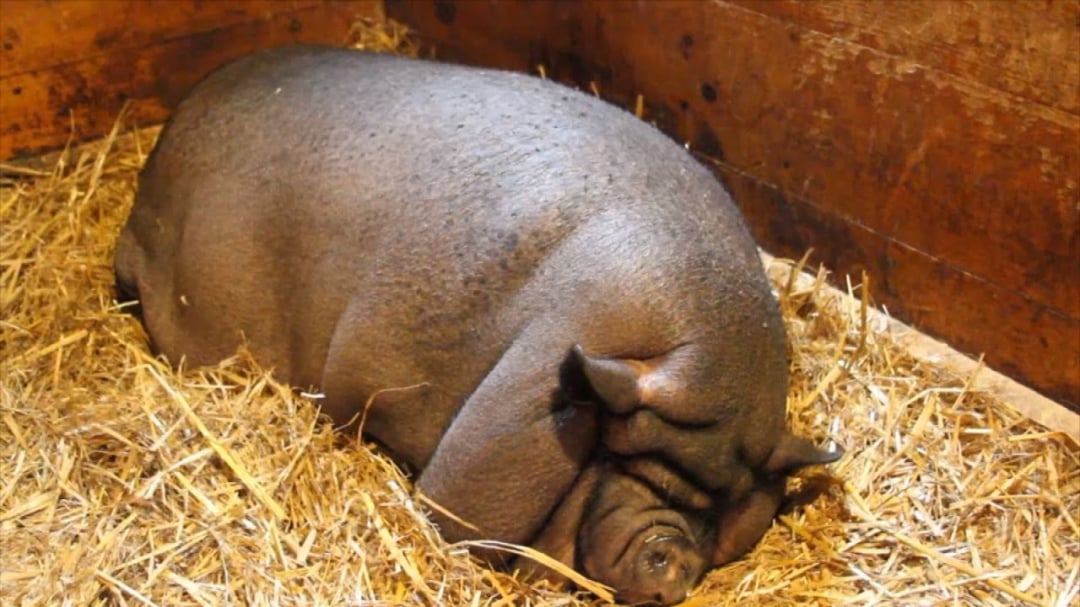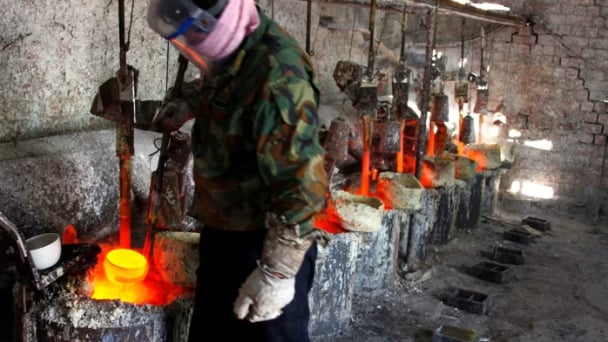June 14, 2025 | 16:41 GMT +7
June 14, 2025 | 16:41 GMT +7
Hotline: 0913.378.918
June 14, 2025 | 16:41 GMT +7
Hotline: 0913.378.918

Farmers have been fattening hogs since late last year to almost double their normal weight -- roughly the size of a pygmy hippo or a female polar bear -- in the hope the animals will generate higher returns should prices rebound.
Cao Tao, a pig trader in the northwestern province of Shaanxi, said many of the swine he’s buying weigh more than 200 kilograms, compared with their usual size of around 125 kilograms. “Some farmers are holding onto their larger pigs on hopes of a price rebound,” he said.
Instead, Chinese wholesale pork prices have plunged more than 40% since mid-January amid sluggish demand, increased imports and panic selling by farmers after fresh outbreaks of African swine fever. Muyuan Foods Co., the country’s biggest pig breeder, said this week it’s expecting a continued drop in domestic hog prices, with the slump not bottoming out until next year or even 2023.
Many farmers had fattened their pigs in anticipation of a recovery in pork prices, but the rout since February has triggered a sell-off of these large animals that may be delaying a rebound in prices, according to Lin Guofa, a senior analyst at consultancy Bric Agriculture Group.
“When these farms sell together, the sell-off causes an explosive price slump,” he said. Farms in the southwest and south are still holding a large number of “cow-sized” pigs, which could be sold as the weather warms and push down prices for a while yet, Lin said.
China’s hog herd was devastated by African swine fever in 2018 and, while numbers have recovered since then, a recent resurgence has driven up pork imports. The agriculture ministry said in April that the country’s pig herd may recover to usual levels by June or July, although the number of hogs available for slaughter may take another four months to get back to normal.
“Super-sized” pigs are partially to blame for the drop in pork prices, Qiu Huaji, the head of swine infectious diseases at Harbin Veterinary Research Institute, said at a conference last week. A price rebound had been expected in the third quarter due to the resurgence of African swine fever cutting herds by almost half in some areas, he said.
The impact of the obese hogs on pork prices is also being complicated by new rules that prohibit the transport of live pigs across the boundaries of five areas. The regulations -- aimed at combating the spread of African swine fever - are reshaping the market and leading to regional price differences.
Qian Xiaoyun, a farmer in the northern city of Tianjin, said her family wouldn’t be breeding larger pigs after the price slump and had sold all of their animals that weighed more than 150 kilograms. “The falling pork prices and high corn prices give poor returns on those larger hogs as they eat more,” she said.
Bloomberg

(VAN) Extensive licensing requirements raise concerns about intellectual property theft.

(VAN) As of Friday, a salmonella outbreak linked to a California egg producer had sickened at least 79 people. Of the infected people, 21 hospitalizations were reported, U.S. health officials said.

(VAN) With the war ongoing, many Ukrainian farmers and rural farming families face limited access to their land due to mines and lack the financial resources to purchase needed agricultural inputs.

(VAN) Vikas Rambal has quietly built a $5 billion business empire in manufacturing, property and solar, and catapulted onto the Rich List.

(VAN) Available cropland now at less than five percent, according to latest geospatial assessment from FAO and UNOSAT.

(VAN) Alt Carbon has raised $12 million in a seed round as it plans to scale its carbon dioxide removal work in the South Asian nation.

(VAN) Attempts to bring down the price of the Japanese staple have had little effect amid a cost-of-living crisis.